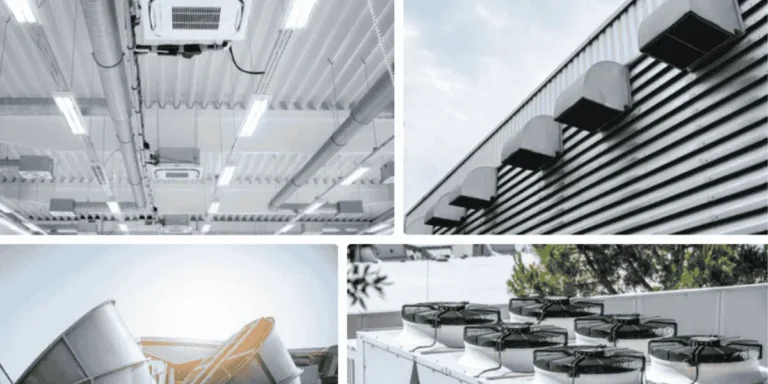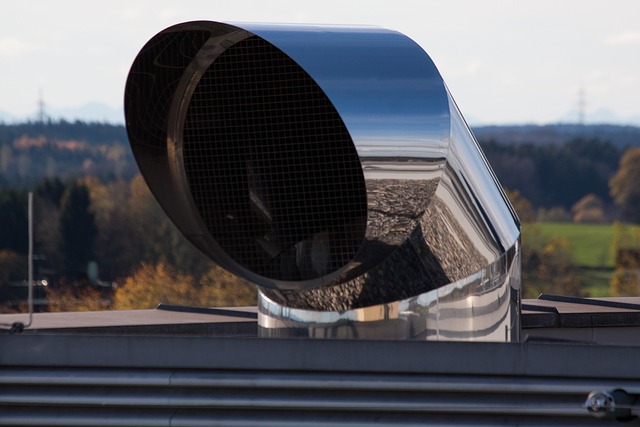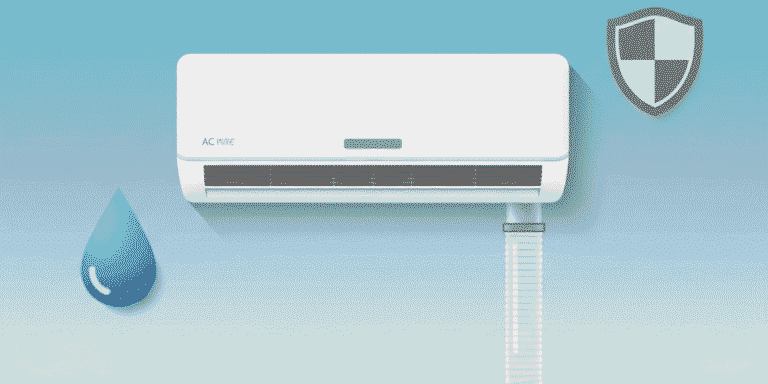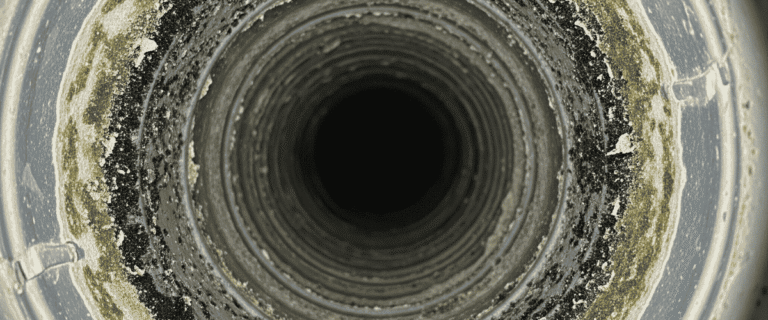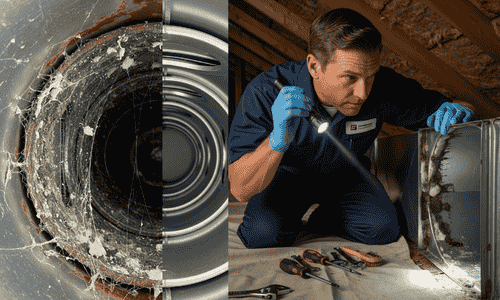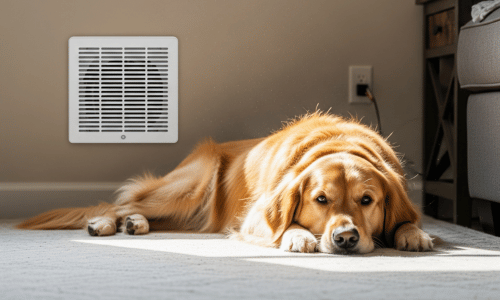Dryer lint after every load Lint accumulates quickly on the screen and within the trap, reducing airflow, prolonging drying time, and increasing fire hazard.
For added protection, clear the lint screen every time, wipe down the housing weekly and clean the vent duct every 6–12 months or faster if clothes remain damp or the dryer overheats.
To schedule an easy maintenance routine and identify warning signs, the following sections guide you step-by-step.
Key Takeaways
- Wipe the lint trap clean after each load to maintain airflow and reduce drying times. Brush or vacuum the lint trap cavity weekly to clear the hidden debris!
- Schedule deeper cleanings to minimize fire risk and conserve energy. Attack the vent and duct semi-annually for heavy users, at a minimum, to a system deep cleaning yearly.
- Modify frequency according to usage, fabrics and dryer type. Step up cleaning during laundry season, with big families or when drying heavier loads such as towels and bedding.
- Don’t just clean on a schedule, watch for warning signs that signal a needed clean. Extended drying times, extra heat, weird smells or lint around your machine are signs of airflow restrictions.
- Protect health and safety with proper venting, particularly for gas dryers. Maintain unobstructed vents and place carbon monoxide detectors in proximity to the laundry location.
- Check out these tips for a streamlined weekend clean. Vacuum, soft brush, dryer vent brush and check tight vent connections and freely moving exterior flap after each cleaning.
The Lint Cleaning Cadence

Establish a lint cleaning cadence to maintain good airflow, conserve energy and reduce the likelihood of fire. Modify the cadence as your laundry load changes, new fabrics are added, or seasons change.
| Task | Frequency | Why | How |
|---|---|---|---|
| Empty lint trap | After every load | Best airflow, faster drying | Remove lint by hand; quick wipe |
| Check before start | Before every load | Catch bypass or clogs early | Visual check around screen |
| Cavity brush-out | Weekly | Stops hidden buildup | Soft brush or vacuum |
| Vent deep clean | Every 6 months | Heavy use/pets add lint fast | Rotary brush kit or pro |
| Vent system clean | Once a year | Safety and performance | Include duct and exterior hood |
| System audit | Every 2 years | Full reset on hidden lint | Professional preferred |
1. After Every Load
Empty the lint trap or lint screen every cycle. It keeps airflow steady and helps the heater run cooler, which protects parts and reduces dry time.
Gently pull all the lint & hair you can see. If you dry towels, fleece or pets, anticipate quicker buildup. A warm-water rinse whisks away fabric softener residue.
Brush the lint trap cavity with a soft brush or belt-type vacuum nozzle attachment once a week. Inspect edges for lint that bypassed screen prior to beginning new cycle.
If clothes are coming out hotter than usual, or if the cycle appears extended, pause and recheck the trap zone. Little blockages expand quickly.
2. Every Six Months
For heavy laundry use or pet homes, schedule a deep vent clean bi-annually. Lint travels down the duct and collects at curves, junctions and the outside hood.
Check the transition hose and rigid duct for kinks, crushed spots or matted lint. Wipe down the corridor, front to back. Date your documents so you stay on cadence.
Run a 15-minute test cycle after cleaning to push lint loose. If drying times plummet, you did it right.
3. Once a Year
Do an annual full-system clean: transition hose, in-wall duct, and exterior vent hood. Many owners bring on vent pro annually for a deep pass and inspection of clamps, joints, and backdraft damper.
Mark the date, certain warranties require evidence of regular maintenance.
4. Based on Use
Big families, communal laundry rooms, or quick-turn rentals require shorter cadences. Keep an eye out for extended dry times or damp patches on seams, these are lint warning signs.
During peak seasons or after heavy loads like towels and bedding, clean traps more frequently and push the semiannual vent clean up. Monitor weekly lint loads to establish a realistic cleaning cadence.
5. Based on Type
Follow your model’s pace. Gas dryers should get the stricter vent checks because of CO risk.
Know your filter type–mesh, XL trap, or regular screen–and clean accordingly to its surface area. Ventless units or long duct runs are well-served by the pros.
A lot of vent cleaning is doable with kits, but ring up a pro if access is snug or ducts are long.
Beyond the Obvious Dangers

Dryer lint is not just a fire hazard. It stresses the appliance, pollutes indoor air, and can cause health and economic problems. How frequently you clean is determined by your configuration and utilization – not a hard and fast schedule.
Fire Hazard
Dryer lint is extremely flammable, and clogged vents increase the in-unit temperature, making for perfect fire conditions. Even a small spark from static or an old wire can set off lint stuffed in the duct, on the heater or dryer floor.
Reduce the hazard by empting the lint screen after each load, and clearing the vent and ductwork annually (or more frequently if you dry bulky loads, have pets or extensive vent runs with multiple bends). A clogged vent limits airflow and cranks heat, which is at the heart of the issue.
Select hard metal ducts dimensioned to the full 100 mm diameter producers specify. Plastic or foil flex vents frequently don’t fully extend to 4 inches and can snag lint. For each 90-degree turn, subtract 1.5 m from the 10.7 m max length to control resistance. Bad installation compounds risk, so verify short runs, minimal bends and tight joints.
Appliance Strain
When lint obstructs airflow, the motor strains, the drum rotates under increased load and sensors cycle more frequently. Dry spells lengthen, power consumption rises, and components fatigue more quickly.
Minimize wear by maintaining a clean lint filter and unblocked vent from dryer to outside hood. If a regular cotton load requires two cycles, or the cabinet is hot to touch, the airflow is probably impeded.
Routine maintenance assists the dryer in operating at consistent temperature and airflow, safeguarding thermostats and the heating element over time.
Air Quality
Blocked vents may blow linty air into the room. Those tiny fibers and dust contribute allergens, which is a big deal if you’re prone to asthma or chronic cough.
Moisture stuck in lint piles causes musty smells or mildew within ducts. Keep vents clean — as part of your broader air duct routine — and replace crushed transition hoses behind the unit.
If you feel lint around your dryer base, it can leak through interior seals that aren’t air-tight, dumping particles into the cabinet and your home.
Carbon Monoxide
Gas dryers require direct, unobstructed venting so that combustion gases leave the home. A blocked vent can push carbon monoxide inside.
Don’t schedule vent cleanings for some arbitrary date, but instead according to how much you use it and your system’s layout. Place CO detectors close to the laundry and beds.
If you smell exhaust, see scorch marks, or sense feeble airflow at the exterior hood, shut off the dryer and remove the blockage.
Your Dryer’s Silent Signals

Minor changes in drying time, heat and smell typically indicate lint accumulation or airflow restrictions. Interpret these hints in advance to schedule cleanings, reduce energy waste and minimize fire risk.
Longer Drying
Wet clothes, 2-3 cycles, warm but not dry – all indicate bad airflow. When towels go beyond one complete cycle, inspect the lint screen and vent path. Lint clogs cause the unit to work harder and dry less effectively, which stresses components and increases expenses.
Compare today’s load with last month’s. If a normal mixed load that once completed in 45–60 minutes is now requiring more, airflow could be obstructed. A log in your phone helps: note fabric type, load size, cycle used, and total minutes.
Move quickly to halt snowballing. Check your lint screen after every load. Deep clean the screen monthly with hot water, a drop of liquid detergent, and a nylon brush to remove waxy build-up from dryer sheets.
If times remain long, clean the vent duct and outside hood. A fast check outside assists. If the air flow at the vent is weak or you notice lint on the hood or flap, arrange for a vent cleaning. Heavy users or large households may require this more than once a year.
Overheating
A sizzling hot top panel, scorching sidewalls or a laundry room suddenly feeling like a sauna all indicate limited airflow. Hot loads that are dry on the surface but too hot to the touch are cues.
Respond by unplugging the unit and inspecting the full path: lint screen cavity, flexible duct, rigid duct, and exterior vent cap. Clean out the ducting, and make sure that the vent flap opens freely. Clean lint mats on the hood.
Being proactive reduces fire danger. Neglecting dryer cleaning is one of the top home clothes dryer fire starters. Schedule a complete vent cleaning at least annually — a second service if you frequently dry bulky items.
Unusual Odors
A burning or singed smell in the middle of a cycle is an indicator of lint near the heater or a clogged vent. Discontinue use and inspect. Musty or moldy smells indicate moisture that has been caught by sluggish air currents.
Deep clean the lint trap as well as the cavity, duct, and exterior vent. If smells persist, swap in new dryer or softener sheets – residue can coat the screen and trap scents.
If clothes initially seem dry but smell funky later, your airflow is probably off and your vent needs to be addressed.
Visible Lint
Lint in any of these areas — around the base, behind the unit, or on the exterior vent hood — is a scarlet letter. A clogged vent typically manifests itself as lint or residue on the hood flap.
Wash what you see immediately so it doesn’t spread further in. Shine a flashlight into your lint trap cavity and vent exit after each use. Quick inspections nab accumulation between yearly cleanings and assist you in identifying trends before they become a problem.
A Practical Cleaning Guide
Clean lint traps, vents, and ducts on a regular basis to reduce fire hazards, save energy, and ensure faster drying. Gather tools first: vacuum with hose, soft brush, microfiber cloth, mild dish soap, bucket, screwdriver, vent brush kit, and a flashlight. Unplug electric dryers, or turn off the gas valve for gas models. See your manual for model-specific steps, fastener types, and safety notes.
Follow this routine:
- Clear the lint trap after every load and inspect it prior to each cycle.
- Wash the lint screen in warm soapy water once every 1–3 months.
- Vacuum the trap cavity monthly.
- Clear out the vent duct every 3–6 months, or as directed by the manufacturer.
- Inspect the exterior vent every season and after storms.
- Conduct a venting inspection at least twice a year.
The Lint Trap
Take out the lint screen and brush away all lint, with your hand or a soft brush, after each load. A clogged filter impedes airflow, causes the dryer to strain and can increase energy consumption. It traps heat, which increases fire risk since lint is extremely flammable.
Rinse the screen with warm water and a little mild dish soap every few months, or every month if you use dryer sheets. Fabric softener sheets leave a residue that can cause an airflow-blocking film. Rinse thoroughly and let air-dry completely before replacing.
Just shine a light into the trap cavity. Vacuum loose lint with a thin crevice tool. Wipe the rim and housing with a barely damp microfiber cloth. Recheck next cycle.
The Vent Duct
Unplug the dryer, or turn off the gas valve. Pull the dryer out from the wall by your 30–60 cm to access the vent. Loosen the clamp and pull off the vent hose to expose the duct.
Use a vent brush or a vacuum hose in short strokes through the duct. Rotate from the dryer side out, then back again from outside if you can. Bag and toss lint.
Check for flattened curves, kinks, holes or screws protruding into the air path. Replace damaged ducting — rigid metal duct is optimal for smooth flow and reduced fire risk.
Reconnect the hose snugly. Employ a secure clamp. Shove the dryer back carefully to prevent a fresh kink.
The Exterior Vent
Locate the outside vent hood and draw out lint mats at the discharge. Remove leaves, dust or nest material from around the cover.
Rinse cover with soapy water, dry with a cloth and make sure the flap opens and closes freely. Look for frost in cold climates, and stuck lint clumps in humid zones.
Plan seasonal checks, and post-heavy use periods or storms. If airflow seems feeble at the hood while the dryer is running, check the duct for obstructions.
The Unseen Financial Toll
Dryer lint seems insignificant, however the fees add up quickly when air movement decreases and heat builds. Regular maintenance reduces bills, decreases breakdown potential and steers clear of premature replacement.
- Lower monthly energy use through shorter, faster cycles
- Fewer repairs to motors, belts, thermostats, and heating parts
- Longer dryer lifespan, delaying a high-ticket replacement
- Reduced fire risk and related property losses
- Improved gas dryer safety by reducing carbon monoxide accumulation
- More stable household budget with fewer surprise costs
Energy Bills
Clogged lint traps and vents make dry times longer. Every batch cooks hotter and longer, increasing electricity or gas consumption. Dusty vents can drive your energy up, but routine cleanings can boost efficiency as much as 30%.
If a cycle runs 90 minutes, rather than 45, you pay for double the run time, month after month. Trend track. Compare last quarter’s utility bills with the quarter after a full vent cleaning.
Remember to record average cycle length by load and loads per week for fair clean before-and-after perspective. If you have a smart plug or meter, log kWh per cycle for two weeks prior to cleaning and two weeks after.
Savings appear quickly in households that operate consecutive loads. Families with big laundry days typically experience the biggest decrease in energy consumption after vents are free and air flow increases.
Repair Costs
Lint buildup blocks airflow, overheating the drum and heating element. That heat strains thermostats, fuses, bearings and motor windings, as well as trips safety cutoffs, which can mask the root cause and result in repeat service calls.
A regular vent cleaning by a pro generally runs way less than an emergency trip to replace a heating element or motor. It reduces the risk of carbon monoxide problems in gas dryers, which can cause expensive remediation.
Plan simple tasks weekly: empty the lint screen every load, and wash it monthly if residue builds. Schedule a vent cleaning annually, or every 6 months if drying times are increasing.
Maintain a mini-journal of parts switched out, dates, and expenses. Over a year, the trend indicates how preventative cleaning reduces repair expenses and downtime.
Replacement Cost
Neglect reduces dryer lifespan. A clogged lint filter and vent make the machine run hot and hard — which can cut lifespan in half and push you toward early replacement. Overheating causes catastrophic malfunctions, and in the worst instances, dryer fires that result in destruction and loss.
| Item | Neglected Maintenance | Regular Cleaning |
|---|---|---|
| Annual energy spend | High (long cycles) | Lower (up to 30% gain) |
| Typical repairs/year | Frequent, high-cost | Infrequent, lower-cost |
| Safety risk (fire/CO) | Elevated | Reduced |
| Dryer lifespan | Shortened; early replace | Extended |
| Annual vent service | Rare | Planned, low-cost |
Spend a little each year on vent cleaning, not thousands on a new dryer. This easy habit keeps air flowing strong, stops early demise, and shields your home and budget.
Common Cleaning Mistakes

Dryer lint care is easy, but little blunders pile on danger, expense, and effort. Consult this checklist to sidestep the mistakes that cause blockages, slow cycles, and dangers.
Checklist of mistakes to avoid
- Just the vent, not only the lint screen. A quick screen swipe won’t do. Lint and debris accumulate inside the vent run and the outside hood. That buildup can ignite fires, drive extended dry times, and initiate repairs. Schedule an entire vent cleaning once a year, 6 months if you do heavy loads, have a long vent, numerous bends, or pets.
- Employing the incorrect tools. Wire hangers, knives or sharp rods can puncture metal ducts and catch lint. That damage creates rough spots where lint sticks and proliferates. Use a specialized brush kit with flexible rods and a low suction vacuum. Go in short, soft strokes so you don’t knock joints loose.
- Putting in a wet lint filter. Screen washing is great but re-installing it wet converts it into a mesh plug. It traps more lint, restricts air circulation and can cause the heater to run hot. Dry the screen thoroughly prior to use. Make sure water streams through it at the sink — if not, scrub off fabric softener film.
- Neglecting duct type. Plastic and thin foil flex vents get crushed, kinked and won’t expand to the full 102 mm (4in) diameter that many codes call for. That choke point increases lint accumulation and heat. Switch to smooth-wall metal duct, keep runs short and bends to a minimum. Use a solid metal transition where the dryer interfaces with the wall.
- Neglecting the outside finish. A stuck flap, bird guard packed with lint, or a screen at the cap can stall air. Once you’re done cleaning, test the flap swings, air blows strong and nothing is blocking the outlet.
- Not securing joints. Loose clamps and taped seams leak lint into walls and rooms. Following your cleaning, inspect all of the clamps at the dryer collar, elbows and wall plate. Metal clamps or foil tape rated for ducts, not duct tapes made from cloth.
- Ignoring signs of bad airflow. Hot top panel, damp loads, a musty smell or lint inside the door indicate a clog. Clogged vents make lint and moisture linger, which is a breeding ground for mold and mildew — plus stinky clothes. They also cause the dryer to run excessively, increase energy costs, and can reduce the machine’s lifespan from 10 years down to roughly 3.
- Adhering to a one-size schedule. Cleaning varies according to laundry load, vent length, number of bends and hose type. High-use homes or long, complex runs might require service every 6 months to minimize fire hazard and maintain consistent efficiency.
Conclusion
To maintain a safe, speedy dryer, remove lint at a regular beat. Once every load, pull the screen and sweep it out. Every month, clean the screen with warm water and mild soap. Once every 3–6 months, clear the vent and the duct. Annually, perform a thorough inspection from drum all the way to wall cap. Little actions pile up quick.
Real victories manifest themselves in your expenses and your time. Then shorter cycles. Lower kWh consumption. Less wear and tear on clothes. Less repair calls. A clean vent runs cool and steady – even on towel or jean loads.
Ready to improve your indoor air quality? Whether it’s mold, dust, or routine maintenance, our experts have you covered. Contact us today to book your professional duct cleaning service.
Frequently Asked Questions
How often should I clean dryer lint?
Clean the lint screen after each load. Deep-clean the vent and duct every six to twelve months. If you dry heavy fabrics or observe longer cycles, clean earlier. Frequent cleaning helps mitigate fire hazards and maintain minimal drying times.
What are the hidden dangers of dryer lint?
Lint is extremely flammable. It holds heat, burdening the motor, belt and heating element. This can lead to fires, early breakdowns and expensive repairs. Cleaning lint traps saves lives!
What signs show my dryer vent needs cleaning?
Be on the lookout for extended drying cycles, overheated laundry or laundry rooms, and the odor of burning, or lint around the dryer door and vent cover. If the outside vent flap just flaps, the duct is probably clogged.
How do I safely deep-clean a dryer vent at home?
Unplug the dryer. Just pull it out. Unplug the duct. Clean the duct from both ends with a vent brush kit or vacuum. Clean the lint screen housing. Reconnect, smooth duct, test airflow at outside vent.
Can cleaning lint really lower energy costs?
Yes. A clean vent allows good airflow, so your clothes dry more quickly and consume less electricity or gas. In the average home that translates to shorter cycles and less repeat runs – real savings when totaled over the year.
What common lint-cleaning mistakes should I avoid?
Don’t ram lint further down into the duct. Don’t squish flex ducts behind the dryer. No plastic or foil ducts, use rigid metal. NEVER operate the dryer without the lint screen. Ditch the strong chemicals—vacuum and brush them away.
When should I call a professional?
Call a pro if you smell burning, see lint buildup you cannot reach, have very long or complex ducts, or if drying times stay slow after cleaning. Yearly pro service is smart for multi-floor homes.

